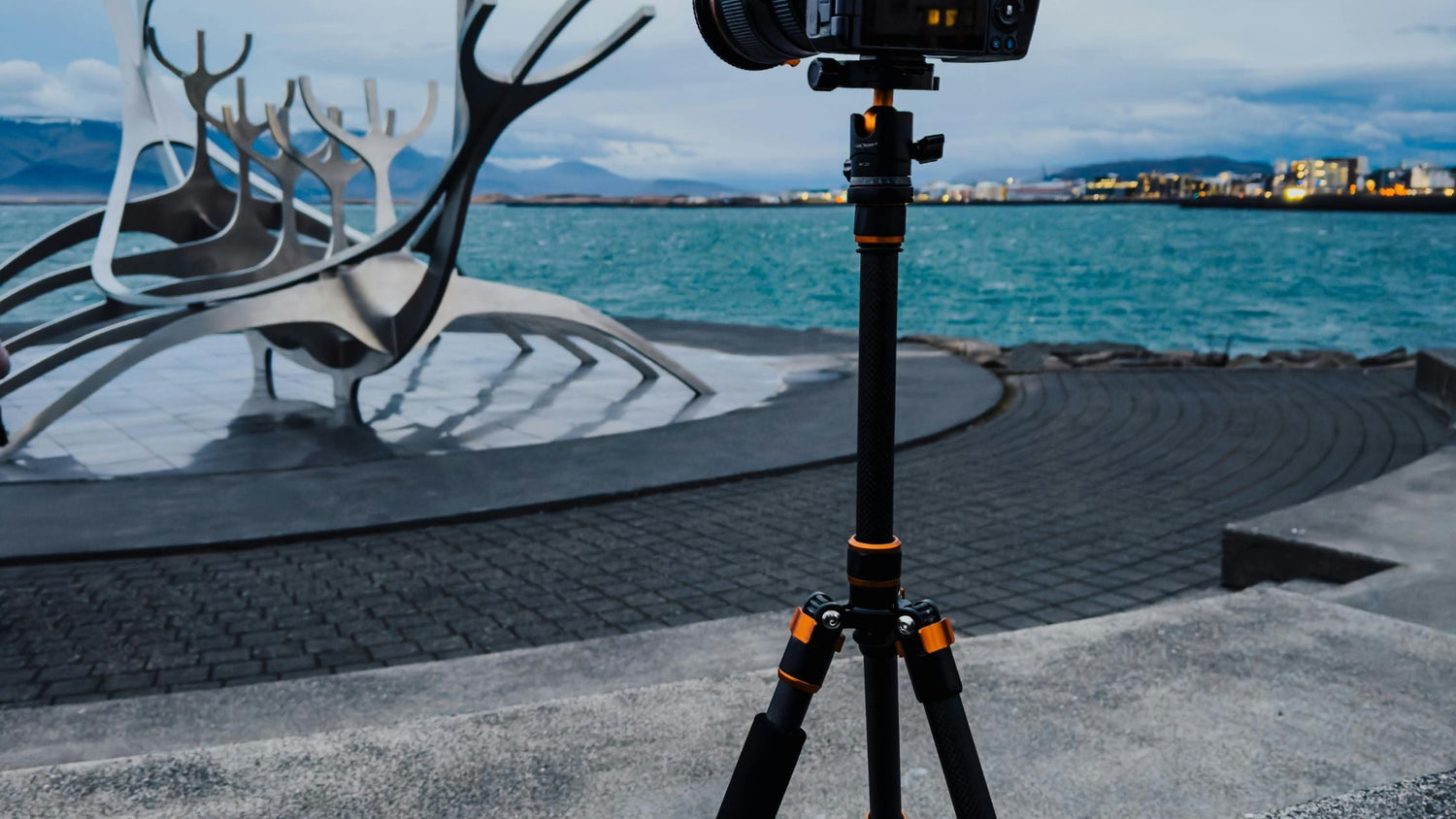When it comes to capturing the perfect shot, the right tripod can make all the difference. Whether you're a seasoned pro or just starting in photography, the tripod you choose will impact the sharpness, stability, and overall quality of your images. But with so many options on the market, how do you find the perfect tripod for your camera and shooting style?
In this guide, we'll explore how to choose the right tripod, the different types available, and some key tips for getting the most out of your tripod in various shooting scenarios. Plus, we’ll introduce a few products that could be your next game-changer.
Why Do You Need a Tripod?
Before diving into the specifics of tripod types, let's first understand why tripods are so important. Simply put, a tripod eliminates the potential for shaky hands and improves the sharpness of your images. It’s especially useful for long exposure shots, low-light environments, or situations where precision is key.
-
Steady Shots: If you’re capturing landscapes, night photography, or long exposures, the stability a tripod provides is indispensable. Even the slightest movement can cause blur, especially when shooting at slower shutter speeds.
-
Consistency in Framing: A tripod allows you to frame your shot consistently, ensuring your composition stays the same across multiple frames—perfect for time-lapses, product photography, or any project that demands precision.
-
Comfort and Convenience: If you're shooting for extended periods, a tripod takes the load off your arms, letting you focus on composing the perfect shot instead of holding the camera.
Types of Tripods: Which One is Right for You?
There are several types of tripods, each designed for different shooting styles and environments. Let’s explore a few options to help you make the right choice for your needs:
1. Standard Tripods
Standard tripods are perfect for most general-purpose photography. They offer a balance between stability, size, and weight, making them a solid choice for everything from landscape photography to studio portraits. If you’re looking for a tripod to keep in your bag for everyday use, this is a reliable option.
-
Best For: General photography, landscape, portraits, and travel.
-
Tip: Look for a tripod that can handle your camera's weight, as some lighter tripods may not offer the stability you need for heavier setups.
2. Travel Tripods
For those who love to explore, a travel tripod is the way to go. These lightweight, compact tripods are designed for easy packing without sacrificing too much stability. Most travel tripods can be folded down to a small size and are made from lightweight materials like carbon fiber.
-
Best For: Travel photographers, outdoor enthusiasts, and anyone needing portability without compromising on quality.
-
Tip: Choose a travel tripod with a quick-release plate for easy setup and breakdown.
3. Studio Tripods
Studio tripods are typically heavier and sturdier, offering maximum stability for indoor shoots, product photography, and studio setups. These tripods often have additional features like a wider base and adjustable legs for greater control over positioning.
-
Best For: Studio photography, product shoots, and still life photography.
-
Tip: Look for tripods that have adjustable height and can support the weight of your lighting setup or heavier cameras.
4. Monopods
Monopods are a single-legged tripod alternative that offers flexibility and portability while still providing some stabilization. While they don’t offer the full stability of a tripod, they’re great for action shots or when you need to move quickly.
-
Best For: Sports photography, wildlife, and video recording.
-
Tip: If you're shooting on the move, a monopod might be the perfect solution for reducing camera shake without the bulk.
Key Features to Consider When Choosing a Tripod
Now that you’re familiar with the types of tripods available, it’s time to think about the key features that will make a tripod the perfect fit for your needs:
1. Material
Tripods are made from various materials, including aluminum and carbon fiber. Aluminum tripods are sturdy and affordable, but they can be heavy. Carbon fiber tripods, on the other hand, are lightweight and more durable but come at a higher price point. Your choice depends on whether you prioritize weight or budget.
2. Weight and Portability
If you're traveling frequently or shooting on the go, portability is essential. Consider the tripod's weight and size, especially if you need to carry it long distances. But remember, lighter tripods may not always be as stable as heavier ones.
3. Load Capacity
Always choose a tripod that can comfortably support your camera and lens setup. If you’re using a heavy DSLR or mirrorless camera with large lenses, make sure the tripod has a sufficient load capacity.
4. Height and Adjustability
A tripod with adjustable legs and a flexible center column will give you more versatility. Look for a tripod that can be extended to your desired height and adjusted easily for different angles.
5. Leg Locks and Stability
Leg locks are a crucial feature for ensuring your tripod remains stable. You can choose between twist locks or flip locks, with twist locks often being quicker to adjust, while flip locks may provide a more secure fit.
Photographic Techniques: Getting the Best Out of Your Tripod
Once you've chosen the perfect tripod, it's time to dive into some photography techniques that will help you make the most of your new gear.
1. Long Exposure Photography
One of the most popular uses for a tripod is long exposure photography. By using slower shutter speeds, you can capture motion and create beautiful effects such as light trails, flowing water, or starry skies. A steady tripod ensures that the camera stays perfectly still during these extended exposures, leading to sharper, clearer images.
-
Pro Tip: Use a remote shutter release or self-timer to avoid camera shake when pressing the shutter button.
2. Time-Lapse Photography
Time-lapse photography involves taking multiple shots at set intervals and then compiling them into a video that shows a scene over time. A tripod is essential for keeping the camera in the same position throughout the entire process.
-
Pro Tip: Use an intervalometer to automate your shot-taking and ensure precise timing for each frame.
3. Macro Photography
For macro photography, stability is crucial, especially when photographing tiny details. A tripod helps keep the camera steady at extreme close-up distances, reducing blur caused by slight hand movements.
-
Pro Tip: Use a tripod with adjustable legs to get the perfect angle for those hard-to-reach subjects.
4. Portrait Photography
In portrait photography, consistency and precision are key. A tripod ensures that your framing and composition remain the same for every shot, especially if you're working with multiple subjects or different poses.
-
Pro Tip: Pair your tripod with a swivel head to easily adjust the camera's angle while keeping the composition intact.
Conclusion: Find the Perfect Match
Choosing the right tripod depends on your unique shooting style and needs. Whether you're shooting landscapes, portraits, or videos, there’s a tripod out there that will help you achieve steady, stunning results. By considering factors like material, weight, and adjustability, and understanding the techniques you’ll be using it for, you’ll be well on your way to finding your perfect tripod companion.
So, get out there, set up your tripod, and start capturing those amazing moments with the confidence that comes from steady support!

